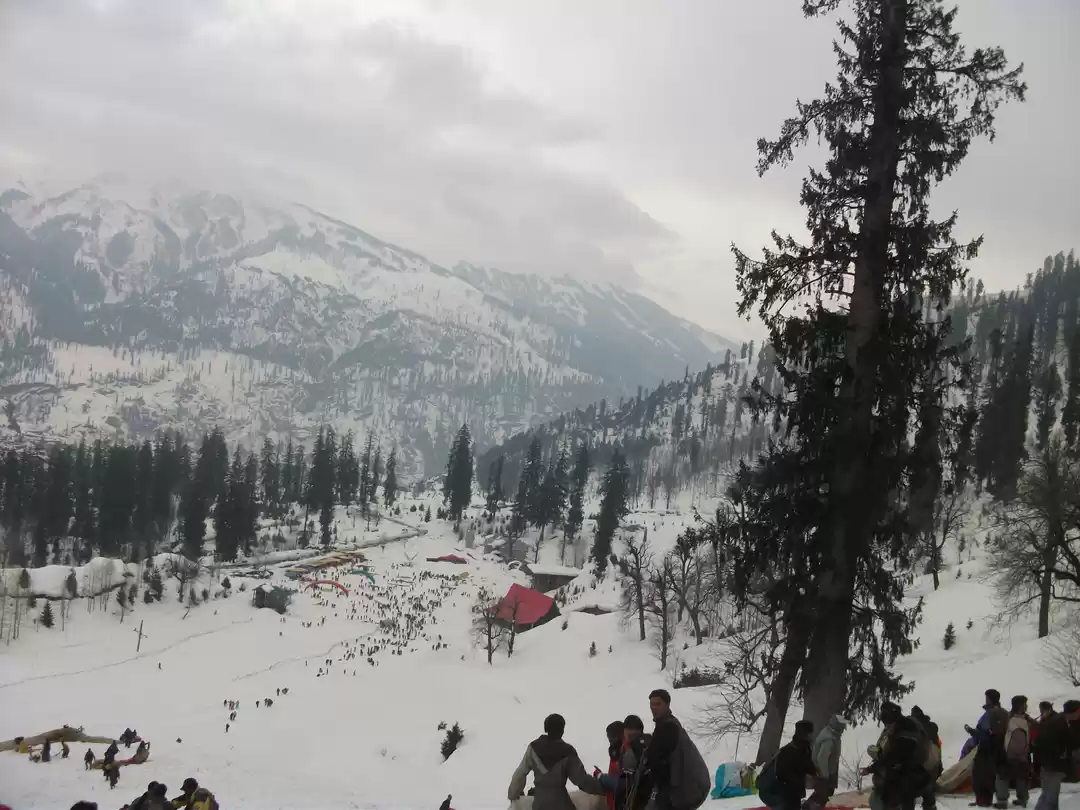Imagine driving on a road that is higher than Mount Everest’s base camp, surrounded by snow-capped peaks, glaciers, and valleys. That’s what Changla Pass offers to the adventurous travelers who dare to explore it.
Changla Pass is a high-altitude mountain pass in the Himalayas, located in the Ladakh region of India. It is the world’s third highest motorable road, after Khardung La and Umling La, and connects Leh to Pangong Lake and Nubra Valley. It is also a popular destination for bikers, trekkers, and nature lovers, who come to witness its breathtaking scenery, challenging terrain, and unique culture.
In this article, we will tell you everything you need to know about Changla Pass, from its history and geography to its attractions and tips. We will also help you plan your trip to this amazing destination, and share some of the best experiences you can have there.
About Changla Pass

The name Changla means ‘pass towards the south’ or ‘pass in the south’ in Tibetan. It is believed that the pass was named after a sadhu named Changla Baba, who lived at the pass and meditated there. According to legend, he blessed the pass and the travelers who crossed it, and his temple still stands at the pass as a tribute. The pass is also considered sacred by the locals, who offer prayers and flags at the pass for protection and prosperity.
Changla Pass is located at an altitude of 5,360 meters (17,590 feet) above sea level, making it the world’s third highest motorable road. The pass is situated on the Ladakh Range, which separates the Indus and Shyok valleys. The road to the pass is narrow, steep, and winding, and often covered with snow and ice. The pass is maintained by the Indian Army, which operates a medical camp and a cafeteria at the pass for the travelers.
Things To Do At Changla Pass
1. One of the most popular things to do at Changla Pass is to take pictures of the stunning views of the mountains, glaciers, and valleys. You can also pose with the signboard that marks the altitude of the pass, and get a certificate from the army camp that proves you have visited the pass. The photo session will take about 15 minutes, and is free of charge.
2. Another thing to do at Changla Pass is to visit the temple of Changla Baba, which is located near the army camp. The temple is a small and colorful structure, decorated with flags and offerings. You can enter the temple and pay your respects to the saint, who is believed to protect the travelers and the pass. You can also get a blessing from the army personnel, who act as the priests of the temple. The temple visit will take about 10 minutes, and is free of charge.
3. A third thing to do at Changla Pass is to have a cup of tea or coffee at the army cafeteria, which is located next to the temple. The cafeteria is a cozy and warm place, where you can relax and enjoy the hospitality of the army personnel. You can also chat with them and learn more about their life and work at the pass. The cafeteria offers hot and cold beverages, snacks, and souvenirs, at a nominal price. The cafeteria visit will take about 20 minutes, and will cost you around 50 rupees (0.7 USD).
How To Reach Changla Pass
The distance from Leh to Changla Pass is about 75 kilometers (47 miles), and it takes about 3 hours to drive. The road is mostly paved, except for some patches of gravel and dirt. The road passes through some scenic villages, such as Karu, Shakti, and Zingral, where you can stop for refreshments and fuel. The road also crosses some streams and bridges, such as the Pagal Nala, which can be tricky to cross during the rainy season.
To visit Changla Pass, you need to obtain an Inner Line Permit (ILP) from the District Magistrate’s office in Leh, or online from the official website. The ILP allows you to enter the restricted areas of Ladakh, such as Pangong Lake and Nubra Valley. The ILP costs 400 rupees (5.4 USD) per person, and is valid for 15 days. You also need to carry a copy of your vehicle registration, driver’s license, and passport or identity proof, as you will have to show them at the checkpoints along the way.
The best time to drive to Changla Pass is in the morning, when the traffic is less and the visibility is better. You should drive slowly and carefully, as the road is narrow, steep, and winding, and can be slippery and bumpy. You should also use low gear and high torque, as the engine can lose power at high altitudes. You should stop and rest at regular intervals, and drink plenty of water and fluids, to avoid altitude sickness and dehydration. You should also carry some spare tires, tools, and emergency kits, and check your vehicle’s condition and fuel level before you start.
Best Time To Visit Changla Pass
The best time to visit Changla Pass is from May to October, when the weather is pleasant and the road is clear. The average temperature at the pass during this period ranges from 5°C to 15°C (41°F to 59°F), and the snow melts away, revealing the greenery and the flowers. The road is also well-maintained and accessible, and the army camp and the cafeteria are open for the travelers.
Changla Pass is a high-altitude mountain pass in Ladakh that offers stunning views, thrilling adventure, and rich culture. It is the world’s third highest motorable road, and connects Leh to Pangong Lake and Nubra Valley. It is also a popular destination for bikers, trekkers, and nature lovers, who come to witness its breathtaking scenery, challenging terrain, and unique culture. In this article, we have told you everything you need to know about Changla Pass, from its history and geography to its attractions and tips. We have also helped you plan your trip to this amazing destination, and shared some of the best experiences you can have there. If you are looking for an unforgettable and exhilarating experience, Changla Pass is the place for you.

















































